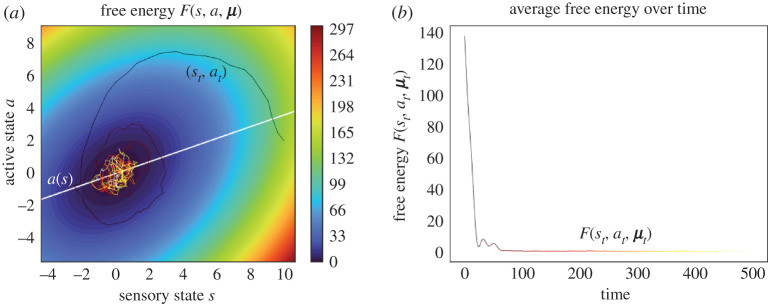Figure 8.
Active inference. This figure illustrates a system’s behaviour after experiencing a surprising sensory state, averaging internal variables for any blanket state. We simulated an Ornstein–Uhlenbeck process with two external, one sensory, one active and two internal variables, initialized at the steady-state density conditioned upon an improbable sensory state . (a) The white line shows the expected active state given sensory states: this is the action that performs active inference and optimal stochastic control. As the process experiences a surprising sensory state, it initially relaxes to steady state in a winding manner due to the presence of solenoidal flow. Even though solenoidal flow drives the actions away from the optimal action initially, it allows the process to converge faster to steady state [60,61,73] where the actions are again close to the optimal action from optimal control. (b) We plot the free energy of the expected internal state, averaged over multiple trajectories. In this example, the average free energy does not decrease monotonically—see figure 5 for an explanation. (Online version in colour.)

